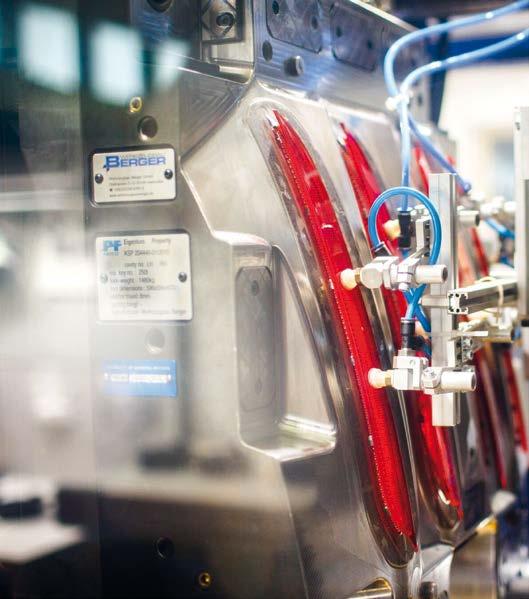
7 minute read
Plastics Industry – Innovative EU Industry
by PP AGENCY
The plastics industry is developing rapidly. In Europe alone, it employs more than 1.5 million people. The most widespread technology in this segment is still plastic injection moulding. Innovations are driving production ahead, technologies are being enhanced and the applied materials are also changing. Moreover, plastics’ processing, the design of plastic products and their mass production, as well as specialised production, have a long tradition in the Czech Republic.
The manufacture of plastics and plastic products is one of the most innovative sectors in the European Union. Changes are influencing all branches, including the healthcare sector. For example, technically clean premises, requiring strict sanitary conditions and antistatic protection, where pharmaceutical products are filled and packed, have switched from the normal white ultra-high-molecular-weight polyethylene to a special material. The three main segments supplied by the plastics industry are the packaging industry, the healthcare sector and the automotive industry. In a global comparison, the packaging industry is definitely most dominant. In the Czech Republic, plastic injection moulding for the automotive industry ranks as number one. This is because the Czech economy is still strongly tied to Germany, with the related demand for automotive components.
Advertisement
n INDUSTRY TRENDS
The present trends of the industry can be seen in three main areas. The first is the area of polymers. From the environmental viewpoint, plastics are not ideal, but their features, including low density, low energy-demanding manufacture, good insulation and barrier properties, make plastics an excellent material. These facts suggest why the trend has been and definitely will be their recycling. In addition, the applications of biopolymers, nanomaterials, hybrid parts and composite materials with different types of filler will be developed, too. n AUTOMATION OF PLASTICS’
MANUFACTURING PROCESS
The second area where the plastics industry is changing are the processes where automation and digitalisation will be extensive. Production of light parts and structures will still be much sought after. Increasingly often, companies will implement zero waste processes and additive manufacturing. The last area is the area of machinery and equipment, where we currently notice the trend to reduce resources and to integrate intelligent systems of control. At present, customers do not just demand the delivery of the injection moulding machine itself, they want complete manufacturing units. This means that they will order not just the injection
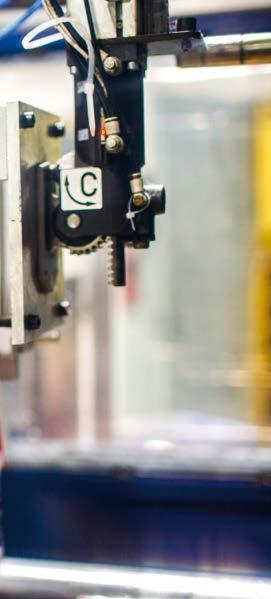
moulding machine, but also the equipment for assembly of the parts.
n INDUSTRY 4.0
When several years ago the term “Industry 4.0” started to be heard more often, it was obvious that it would also significantly influence the plastics industry. Several years ago, reverse engineering dominated (deconstruction of an existing product to learn as much as possible about its functionality and assembly), precision components’ production was on the rise, and the requirements for electrotechnical components, 3D print or “smart” manufacturing of “smart” products became stricter. In subsequent years, these trends were fully reflected and established in the plastics industry and they are continuing their further development.
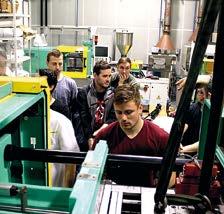
n WHAT IS THE FUTURE
OF THIS INDUSTRY?
Companies are paying increasing attention to the possibilities of the use of plastic waste as a raw material for plastics’ production. For example, pallets and road crash barriers are made from mixed plastics. While, in the past ten years, the development of plastic processing followed two directions: 1) use of materials of better quality and 2) innovations aimed at automation and phasing-out of manual work, now, the main objective is to integrate plastic waste into the manufacturing process. This resource, not yet fully explored, will be the future of plastics’ innovations. Actually, each of the global players is trying to work out how to manufacture plastics from the waste. The key question is what exactly to make from it – whether substitutes of synthetic polymers, i.e. bio-polyethylene and bio-polypropylene, or natural polymers, or other substances.
n STUDENTS IN THE PLASTICS
INDUSTRY
However, without people the plastics industry cannot cope, even with a high level of robotisation and automation. The key to all high-quality staff is, as in any other industry, education. Requirements for education are growing exponentially, with respect to the trends and innovations in the sector. An interest in plastics’ processing is also being expressed by universities, e.g. the University of Chemistry and Technology in Prague, Tomáš Baťa University in Zlín, and the Technical University in Liberec, where Plastics’ Processing has been incorporated in the curriculum for more than 40 years. The interest of students in this field is still high, e.g. in the accredited study programme named “Technology of Plastics and Composites”, covering the theme of plastics’ processing comprehensively, from polymers, to technologies and processes, construction of components and forms, machines, additive technologies, to corporate management. Students in Liberec have top-class laboratories available and can participate in research
History of Plastics Industry Mankind already took the first step to plastics in 1870, when the Hyatt brothers in the USA discovered thermoplastic – this was cellulose nitrate dissolved in an alcohol solution of camphor. The injection method naturally also spread to the Czech lands. For example, during the era of the First Republic, the level of the plastics and rubber industries corresponded to the standards in developed European countries. Progress occurred especially in the processing of what were called “reactoplastics”, predominantly of phenol formaldehyde moulding compounds, and aminoplastics. The most dominant technology was direct injection moulding, and later, transfer moulding. Manufacturing and processing of thermoplastics were still in their infancy, but they soon became widespread and, after World War II, enjoyed further development. In 1946, the state-owned enterprise, Plastimat in Jablonec nad Nisou, was established, followed by other plastics’ producers. Gradually, plastics’ injection technology was developed and thermoplastics were also innovated. After 1990, Czech enterprises were catching up with the Western world, with the machinery being modernised and the first contracts acquired for West European customers. Numerous new plastics’ businesses were established and built up a global reputation.

projects and engage intensively in industrial practice.
n CURRENT SITUATION IN THE CZECH REPUBLIC
In the Czech Republic, there are about 2 500 businesses operating in the area of plastics’ processing to final products. About 50 to 60 % of used plastics are recyclable, but only under certain conditions. In the Czech Republic, the pattern of downstream segments for the plastics industry is very similar to the situation in other European countries – in terms of the volume (tonnes) it can be characterised as follows: 40–45 % packaging, 20–25 % construction industry and agriculture, 20–25 % automotive, 5–20 % other (consumer goods, medical, etc.). Proportions of revenues are somewhat different, with respect to the price and value added of the article.

Important Acquisition The Ostrava BR Group is expanding – it is going to cover almost one-tenth of the Czech plastics market. In 2021, the BR Group bought Montix, a business based in Mohelnice in the Šumperk region, and an important producer of plastic metal-covered parts intended especially for the automotive industry. The acquisition will significantly strengthen the Plastics Division of the BR Group. Montix has almost 550 employees; before the acquisition, the BR Group employed more than 2 200 persons. The BR Group, headquartered in Ostrava, conducts business in the branches of industrial textiles, automotive and light engineering. It incorporates 11 manufacturing companies, including Lanex, Conrop, and Singing Rock, and has branch offices in Slovakia, Poland, and Russia. Members of the Group are also PF Plasty – a plastics’ producer from Chuchelná – and IPG Plasty from Milotice nad Bečvou. Last year, the Group generated a turnover of CZK 3.3 billion.

www.explosia.cz
Explosia offers many types of propellants. Flexible, RDX and PETN based charges for special blasting works.


Explosia offers many counter-terrorism products. The company‘s offer includes industrial explosives.

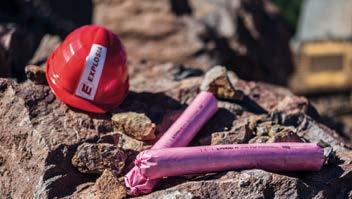
Explosia offers many types of propellants. Bi-modular charge system for 155 mm gun-howitzers.

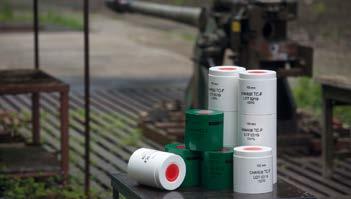
Explosia is the traditional and most important Czech manufacturer of explosives with history dating to 1920.
Explosia offers industrial explosives, explosives for special and military use, black powder, drilling and blasting services, special products for counter-terorism, smokeless powders, etc.
Explosia is 100% in the ownership of the Czech Republic, it is an independent commercial company with a significant position on the market of industrial explosives.










